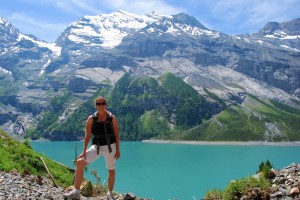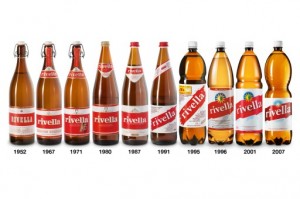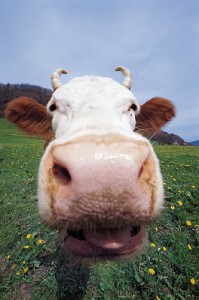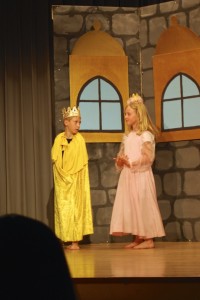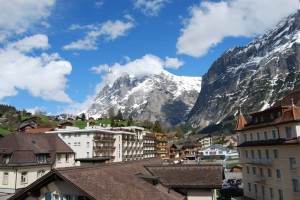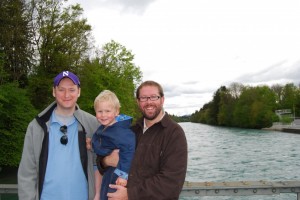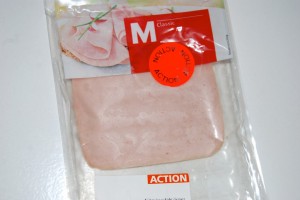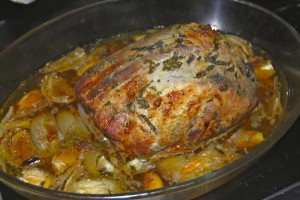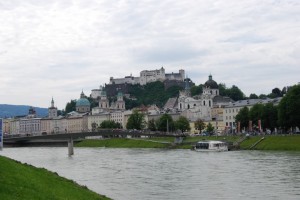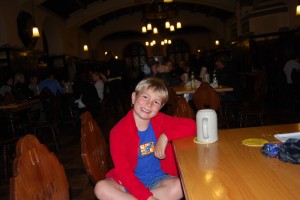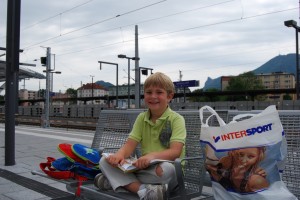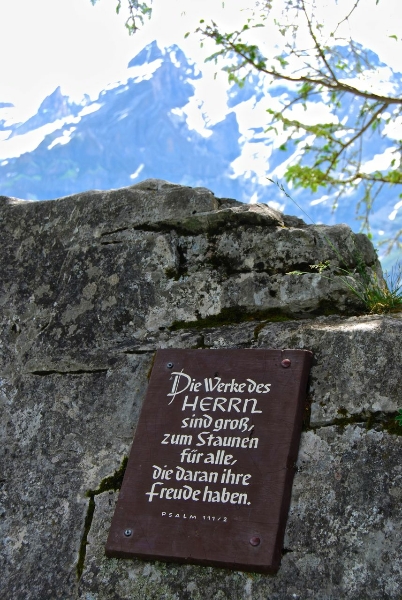
“Great are the works of the Lord, they are pondered by all who delight in them.” Psalm 111/2
Last Sunday, I went to the mountains alone. Joe stayed home with the kids to give me a “day off.” As I was walking toward a mountain lake, I saw this sign. Being surrounded by such beauty, it is easy to feel the grandeur of everything. Switzerland is one of the most beautiful places I have ever seen. The landscape is its gift, and it has shaped much of its culture and history.
In my experience touring other places in Europe, a lot of time and attention are put on churches. Beautiful, old churches with incredible artwork, stunning architecture, and rich history. They are amazing to see. In Switzerland, churches are plain. In the German speaking cities, this is because the large churches were stripped of their artwork and ornamentation during the Zwingli Revolution in the 1500s. But in the mountains, churches in the mountains are small and plain for many reasons.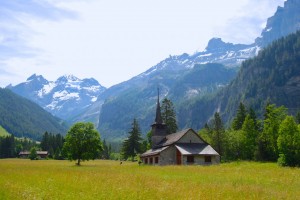 The population is small, so they don’t need large spaces, plus it would be logistically difficult to build a grandiose church in the mountains (though the Swiss seem to manage to build whatever they want in and on and through the mountains). But mostly it just seems silly to try to build something that could demonstrate the “works of the Lord” better than the very surroundings.
The population is small, so they don’t need large spaces, plus it would be logistically difficult to build a grandiose church in the mountains (though the Swiss seem to manage to build whatever they want in and on and through the mountains). But mostly it just seems silly to try to build something that could demonstrate the “works of the Lord” better than the very surroundings.
Instead, the Swiss do their best to share their natural gifts with as many people as possible. Rather than building impressive things to visit, they simply build things that make it possible for people to appreciate what is already there. The Swiss transportation system extends deep into the mountains, with long tunnels, impressive bridges, cable cars, and funiculars that can take you just about anywhere you want to go. They also maintain an extensive network of “Wanderwegs” or hiking trails, as well as mountain biking trails, that are like a web throughout the entire Alpine region.
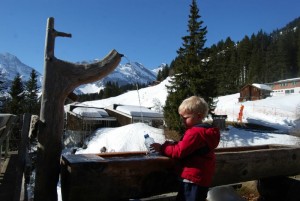 The fountains, like the churches, are practical. Unlike the ornate, sculpted fountains that gush water in Italy, fountains in Switzerland are simple. In the cities they may have a sculpture of some kind above the fountain. In the mountains it may be as simple as a hollowed-out log. But the water flows steadily from small spouts into basins, and it’s drinkable! People regularly reach over and fill cups and water bottles from the fountains in public squares, or just lean in and take a drink. There are no bubblers here, just fountains. And, sometimes there’s even a shorter basin that water flows into for dogs to get a drink.
The fountains, like the churches, are practical. Unlike the ornate, sculpted fountains that gush water in Italy, fountains in Switzerland are simple. In the cities they may have a sculpture of some kind above the fountain. In the mountains it may be as simple as a hollowed-out log. But the water flows steadily from small spouts into basins, and it’s drinkable! People regularly reach over and fill cups and water bottles from the fountains in public squares, or just lean in and take a drink. There are no bubblers here, just fountains. And, sometimes there’s even a shorter basin that water flows into for dogs to get a drink.
The Swiss are very practical and concerned with functionality. This has allowed them to live and enjoy a beautiful, but challenging landscape in an often difficult climate. And they do enjoy it. The trains going to and from the mountains on Sunday were packed with hikers of all ages…. families with young children, elderly couples with walking sticks. Who knew you could put a stroller on a gondola! They don’t need to build masterpieces, because their practicality allows them to enjoy the masterpiece that is already there.

